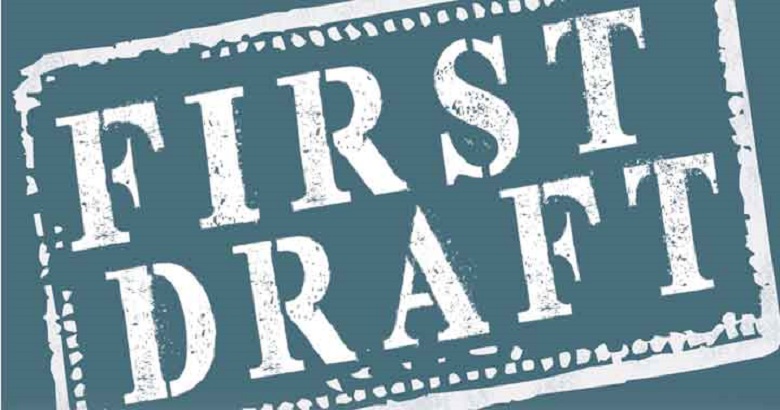What’s the secret formula for unleashing your creative side and writing a book? Some authors argue that there is no one-size-fits-all path to authorship because each writer’s journey is unique. However, practically every bestselling author will have extremely effective writing strategies and habits that enable them to achieve their writing goals.
In this blog, we’ll look at some of the most common tips to writing a book – all while including getting started and finishing a book.
How to Write a Book?
- Start with your favorite book idea.
- Conduct research by reading genre-prominent books.
- Outline the story.
- Write the opening sentence.
- Complete the first draft.
- Create a schedule with achievable goals.
- Select a “distraction-free” writing program.
- Finish your draft.
- Edit the manuscript.
- Publish your book for readers to purchase.
There’s a long and thrilling path ahead. So, let’s get started.
Begin With a Book Idea That You Love

The one thing you must need before you begin to write a book is an idea. Without that, you will never get past the first page of your manuscript.
You may already know what you want to write about, or you may be at a complete loss. In either case, you can decide on a “big book idea” by asking yourself a few easy questions:
- What topic do I want to write about?
- What topics do I believe are essential to write about?
- Who would be interested in reading about this story/subject?
- Will I be able to carry out this idea successfully?
Answering these questions can help you limit your best options. For example, if you have multiple book ideas but only one that you’re actually passionate about and believe you can pull off, then voilà — you’ve found your premise.
However, if you’re stuck for ideas, these questions should help steer you in the right direction. Consider the types of books you enjoy reading, as well as those that have significantly impacted you. Most likely, you will wish to create a book in a similar spirit.
Tools to Help You Find an Idea
If you’re stuck, try free writing based on a writing prompt or creating a tale using a plot generator to get started! You might come across an intriguing topic or plot element that stimulates a “big idea” for your book.
Research By Reading Genre-Prominent Books
Once you’ve identified your big idea, the next step is to discover your genre. Again, if you’re writing a book you enjoy reading, you’ve already got a leg up! Reading books in your genre is the single most effective technique to learn how to write in that genre.
If not, you should choose a few representative titles and research them. How lengthy are the novels, and how many chapters do they contain? What does the story’s layout look like? What themes and ideas converge in the book? Perhaps most crucially, do you believe you can write a novel with similar elements?
Find Out What People Read
You could also conduct market research on Amazon to find the most popular books in your genre. If you want your book to succeed, you’ll have to compete with these best-sellers. Go to Amazon’s Best Sellers page and choose your genre in the lefthand column.
Then, read the book blurbs to see what truly sells. What do they all have in common, and why may readers enjoy them? Does your book live up to these standards?
Finally, consider how your book can add something new. For example, if you’re writing a psychological thriller, will there be a sneaky narrator who is not a reliable narrator or a series of unexpected twists and turns? If your book is nonfiction, do you have a distinct take on the subject or a particularly deep reservoir of knowledge? And so on.
Going above and beyond is the only way to give your book a shot in today’s extremely competitive industry. So don’t scrimp on genre research since it will show you where the bar is and how you can raise it.
Outline The Story
Many great stories begin with a solid outline. This is especially vital if it’s your first novel since you’ll need a firm blueprint to rely on when you get stuck! (Because, believe us, you will get stuck.)
So, how do you go about developing the outline for your book? Here are the essentials:
- Consider a format that works for you. There are numerous forms of outlines, including the free-flowing mind map, the detailed chapter-and-scene outline, the character-based outline, and so on. If one method does not work for you, try another! Any kind of plan is better than having none.
- Use a beginning, middle, and end. Way too many authors begin writing a book with a clear notion of how their story should start… However, their middle is hazy, and their ending is nonexistent. Take this opportunity to flesh them and connect them to one another. Remember that the best books have “earned” endings, so try to build toward it from the beginning.
- Consider potential conflict points. Conflict is at the heart of each successful work; it draws the reader in, creates tension and emotion, and ultimately reflects the themes and/or message you wish to express. You don’t have to know precisely where your conflict will appear, but you should have some sense of how it will work throughout your book.
- Get to know your characters. If you haven’t spent much time developing your characters, your outline is an excellent opportunity to do it. How will your characters interact throughout the novel, and how will these interactions reflect who they are and what is important to them?
Write An Opening Sentence

Let’s get started with the actual writing and make some progress on your first draft. One of the most critical aspects of writing a book is starting it! It is not an exaggeration to say that the first few pages can make or break your book; if they aren’t good enough, numerous readers will lose interest and may never return to your book again.
First and foremost, you need an opening hook that captures the reader’s attention and makes it impossible for them to turn away. Take a peek at the first lines of these popular bestsellers:
“Mr and Mrs Dursley, of number four, Privet Drive, were proud to say that they were perfectly normal, thank you very much.”—Harry Potter and the Sorcerer’s Stone
“If all of the Saturdays in 1982 can be considered as one day, I met Tracey at 10 a.m.” “On that Saturday, walking through the sandy gravel of a churchyard, each holding our mother’s hand.”— Swing Time
All of these books fall under various genres, but their opening lines have one thing in common: they all captivate the reader’s attention. You can imitate them by delivering an equally strong, slightly furtive statement in your introduction!
From there, your goal is to maintain the reader’s attention by raising the stakes and launching the plot. You should also make the reader care about the main characters by giving them different personalities, ambitions, and motives. (Note that “main” is a crucial descriptor here; never introduce more than a couple of characters at once!)
Of course, there are countless effective writing strategies to compose your first chapter. You may need to experiment with various opening lines, even opening scenes, to get the proper balance – but setting the stage perfectly is worth the effort.
Write The Initial Draft
Many writers believe the secret to writing an excellent book is style: impressing vocabulary, intricate sentences, and figurative language worthy of Shakespeare.
We’re here to clarify that idea. While style is vital (as long as your prose does not turn purple), substance is considerably more critical while writing a novel, which is why you should prioritize the plot, characters, conflict(s), and themes.
Make Sure Your Book Is Completely Deadly, With No Filler
Of course, this is easier said than done, especially if you’ve already begun working on your book. When you reach a patchily outlined area, it’s tempting to continue writing and fill up the page with literary gymnastics. But that’s precisely what this content is: filler. And if you have too much of it, readers will become annoyed and begin to believe you are pretentious.
This is another reason why outlining is crucial. You must KNOW your story in order to stay on track with it! Aside from outlining, here are a few other strategies for making substance a priority:
- Sentences must either reveal character or advance the action. Kurt Vonnegut gave this advice, which is completely accurate: if a sentence does not accomplish one or both of those things, consider eliminating it. If the passage makes sense, leave it out.
- Be aware of your pacing. The slow pace is a sign of overly detailed content. If the events in your novel appear to move slowly, you’re utilizing too much style and not enough substance.
- Use a writing tool to avoid flowery wording. Speaking of great American authors, Hemingway is an excellent resource for learning how to write like the man himself! Paste your writing into the application, and Hemingway will provide methods to make it more concise and effective.
Keep Readers in Mind When Writing
Do you want to be the author of a novel that people will love (and buy)? This is very much the cardinal rule: you should always consider your audience and aim to write “reader-first.”
For example, you may have to write scenes that aren’t thrilling but necessary for the larger story arc. Don’t rush through these scenes just to be done with! Even if they don’t seem intriguing to you, they contribute to the reader’s experience by creating suspense and maintaining pacing — and the reader deserves to enjoy those elements.
Create ‘Fake’ People Who Will Want to Read Your Work
When contemplating your readership, you should consider a proto-persona for marketing a new book for sales purposes. These are created identities that marketers use to understand their target audience better. The more your work appeals to this hypothetical reader, the easier it will sell!
Perhaps you’re writing a true-crime story for devoted true-crime fans. Such readers will have read innumerable criminal cases previously, so you must include unique details to set your case apart and build an extra-compelling narrative to keep them engaged.
Create A Schedule With Achievable Goals
Let’s look at some practical techniques to improve your writing habits. Word count goals are extremely important for creating a successful book-writing process, especially if you want to finish your work in a specific amount of time.
You should set word count targets for individual sessions and weekly — or monthly if that’s how you think about your writing output. For every beginner author, we’d propose the following word counts:
- Write 500-750 words per day.
- Write 1,500-2,500 words per week.
- Write between 6,000 and 10,000 words every month.
These goals are based on a schedule of three to four sessions per week, which is appropriate for a beginning yet sufficient to make excellent progress. Even if you merely follow our minimum suggestions — 500 words every session, three times per week — you may efficiently complete your book in less than a year!
Speeding Up the Book Writing Process
If you want to know how to write a book quickly, your word count targets should look something like this:
- Write 1,500-2,000 words per session.
- Write between 9,000-15,000 words per week.
- Write 35,000-50,000 words every month.
The figures above are roughly comparable to NaNoWriMo, an event in which participants write an average of 1,667 words per day to finish a 50,000-word manuscript in one month. It’s hard work, but it’s certainly possible to write a book that rapidly; hundreds of thousands of people do it every year!
However, as any author who has participated in NaNoWriMo can confirm, it’s also a grueling experience. Most authors find it exhausting to write in such large quantities for so many days in a row, and they still have to modify extensively once finished.
If this is your first book, take your time, set achievable word targets, and gradually progress to larger goals.
Use Writing Sessions To Build A Schedule
Having a healthy writing routine is the only way to truly meet your word count objectives – not to mention that it creates a stronger relationship with writing in general! To build a healthy routine, ask yourself the following baseline questions first:
- When do I have the most spare time each day or week?
- What time of day am I most productive?
- How should I schedule my writing sessions effectively?
- Can I realistically balance writing ambitions with other responsibilities?
The simplest method to establish a routine is to take advantage of your existing schedule and natural patterns. For example, if you currently exercise on Tuesdays and Thursdays, Mondays, Wednesdays, and Fridays may be the greatest days to write. Alternatively, if you are most creative late at night (as many of us are!), you can schedule late-night sessions on the weekend/before your day off so you can sleep in the following day.
Ultimately, you want a well-balanced writing regimen that promotes productivity while keeping you from burning out. If writing for multiple days becomes too much for you, try spacing out your sessions or changing your writing environment. If you can’t keep up with your goals, it’s OK to reduce them slightly.
Choose “Distraction-Free” Writing Software
Several pieces of software can assist you in writing a book. And if you haven’t found the ideal software or program yet, don’t worry—there are many more where those came from!
Here are a few remarkable writing tools:
- Scrivener
- Milanote
- FocusWriter
Finish Your Draft

Getting into the swing of writing a book can be challenging. When there are a million things to distract and discourage you, how can you stick to your writing schedule and finish your book?
Based on other writers’ experience, here are a few motivational tactics you can try:
- List your reasons for writing a book. Having a tangible reminder of your genuine purpose is one of the most effective ways to encourage yourself, so consider carefully: Do you want to deliver an important message? Reach out to a specific group of people. Or do you simply want to share this particular story? Write down your reasons and keep them as an ace in the hole for when you feel low on writing inspiration and motivation.
- Collaborate with another writer to write with you. Finding a writing friend is another great way to stay motivated! For one thing, this method provides some fellowship; for another, it prevents you from slacking off too much. So, ask your writer buddies whether they like to meet up regularly or join an online writing group. With the latter, just be sure to share progress reports and proof that you are writing!
- Reward yourself for achieving critical milestones. The notion of rewarding oneself can be a powerful motivator. If you respond well to this type of motivation, set a goal, a deadline, and a reward for meeting it: “If I can write 10,000 more words by the end of the month, I’ll go out for an amazing, fancy dinner with all my friends.” This type of goal is also helpful because you can tell your friends about it, and doing so will hold you accountable.
Do Not Give Up
Remember how we said you would eventually become stuck? This stage is about what to do when you hit a wall. Whether it’s a tricky plot hole, an onslaught of insecurity, or a simple lack of writing inspiration and motivation to create, all writers face setbacks from time to time.
There are numerous techniques to alleviate writer’s block, including freewriting, working on your characters, and taking a shower (yes, that’s a legitimate tip!) However, these are some of the most effective ways we’ve discovered:
- Review your outline. This will spark your memory about planned story aspects you’ve forgotten, which may help you identify the missing piece.
- Discuss your experience with friends. This is another fantastic role for your writing buddy to serve, but you can also discuss writer’s block with non-writing friends. When you’re struggling, it’s always beneficial to vent and bounce ideas off others.
- Take a little break and do something else. Yes, you should occasionally take a break from the keyboard to clear your mind. But don’t take more than a day or two; otherwise, you’ll lose momentum and motivation.
Most importantly, remember to take failures in stride and not let them bring you down. As platitudinous as that may sound, it is true: the only thing that may prevent you from writing a book is that you stop writing. So, stay calm and carry on; each day provides new opportunities, and you will get through this.
Your goal at this phase isn’t to create an instant masterpiece. The quality almost always comes through in the edit.
Edit The Manuscript
You can write for as long as you like… However, if no one else enjoys your writing, you may wind up heartbroken. That is why it is critical to solicit feedback on your work as early and from as many sources as possible.
Begin by inviting your friends and other authors to read a few chapters at a time. However, use their advice in those chapters and wherever they are helpful. For example, if one of your pals complains, “[Character A] is acting weird in this scene,” pay close attention to that character to ensure you haven’t misrepresented them elsewhere.
When your book is finished, you are ready for more detailed comments. Consider asking a beta reader to review your entire manuscript and provide feedback. You may also wish to employ an editor to provide expert feedback.
Finally, it may seem obvious, but we’ll say it anyway for all you stubborn writers: feedback is pointless unless you listen. Separate yourself from your ego, and don’t take things personally because no one wants to insult you; they’re simply trying to help.
Publish Your Book for Readers to Purchase
You’ve finally made it to the end: you’ve brainstormed, outlined, and produced a draft that has been extensively edited (depending on feedback, of course). Your book has reached its ultimate form, and you could not be prouder. So, what happens next?
So, if you’ve followed our advice on catering to your target readers, you might as well try publishing!
Get help from publishing specialists.
Of course, publishing is another complicated process. But if you’ve come this far to learn effective writing strategies to author a book, you can accomplish almost anything! Invest in an incredible cover design, research tips on marketing a new book, or begin composing an attractive query letter that will land you an offer. Whatever path you choose, one thing will remain constant: you’ve written a book, which is a great accomplishment. Welcome to the 0.1% – and may your next book be even better than the first.
FAQ’s – Frequently Asked Questions
1. How do I develop a strong writing habit?
Set a consistent daily writing routine, even if it is only for 30 minutes. Make a dedicated writing area devoid of distractions. To keep focused, employ tools such as writing apps and timers. Join a writing group for accountability and support. Remember that consistency is crucial. Writing will gradually become a part of your daily routine, increasing your productivity and creativity.
2. Why is it important to outline a book before writing?
Outlining a book provides a clear guide for keeping your story on track. It aids in organizing thoughts, identifying crucial story points, and maintaining a logical flow. An outline can also help prevent writer’s block by providing direction. Furthermore, it enables the early detection of potential flaws in the storyline or character development, making the book-writing process easier and more efficient.
3. How do I develop intriguing characters?
Making fascinating characters requires providing them with depth and relatability. Create extensive backstories about their motives, anxieties, and desires. Use dialogs to display personality and growth. Show rather than tell – let actions illustrate character traits. To make them more realistic, incorporate both strengths and weaknesses. Investing time in character development allows readers to engage more intimately with your story, improving their overall experience.
4. What role does editing play in creating a good book?
Editing is critical for improving your manuscript. It entails checking for grammar, punctuation, and spelling problems and ensuring clarity and coherency. Structural editing focuses on plot consistency, pacing, and character development. Beta readers and experienced editors can provide valuable feedback. Multiple rounds of editing help to polish your work, making it more exciting and professional, which increases its chances of success.
5. How can I properly mix show and tell in my writing?
Balancing show vs. tell improves reader interest. “Showing” employs detailed descriptions and actions to express emotions and scenes, allowing readers to feel a part of the narrative. “Telling” conveys vital background information concisely. Showing emphasizes crucial moments and character development, whereas telling summarizes less critical aspects. This balance promotes a dynamic and engaging reading experience, which keeps the audience engaged.



